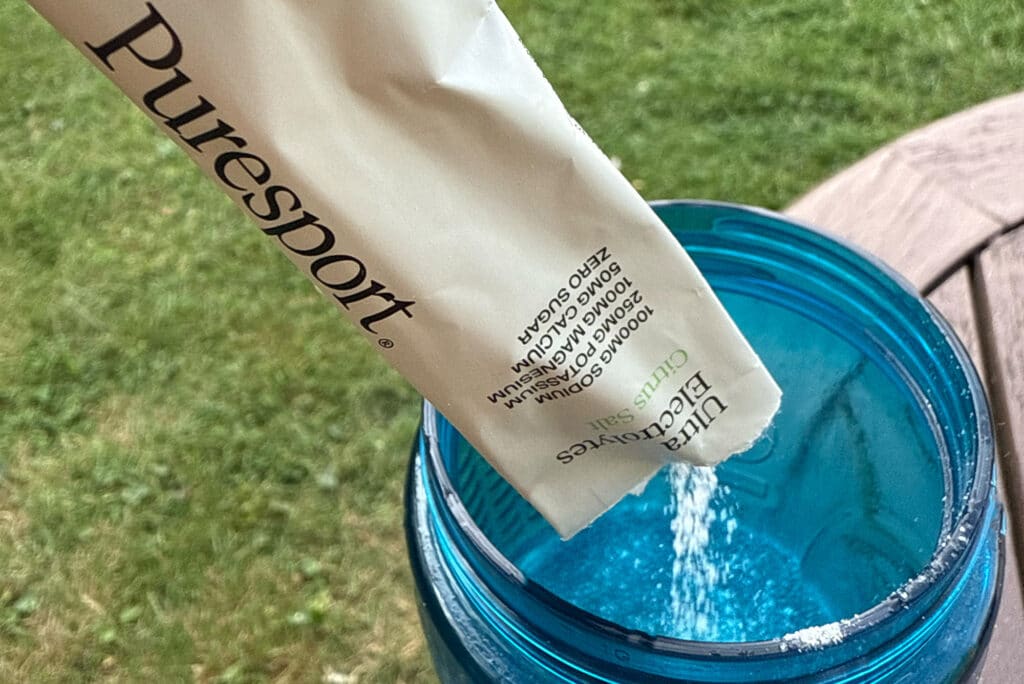


Running is a great way to stay fit and healthy, but it can also be a competitive sport for many. Whether you are a beginner or an experienced runner, increasing your running speed can help you achieve better results and reach your goals. In this guide, we will discuss some tips and techniques about how to increase running speed and achieve fast results.
Before we discuss ways to increase running speed, it is essential to understand what exactly is meant by “running speed”.
Running speed is the rate at which you cover a certain distance while running. It is usually measured in minutes per mile or kilometres per hour. Your running speed can vary depending on factors such as your fitness level, terrain, and weather conditions.
As an example, if you are able to cover 1 mile in 8 minutes, your pace would be 8 minutes per mile. Similarly, if you run at a pace of 10 kilometres per hour, you would cover a distance of 10 kilometres in one hour.
Running speed is a skill that can be improved with practice and dedication. Building endurance and increasing running speed can be achieved through consistent training sessions. Understanding running speed and pace is crucial for improving running performance.
Now that we understand what running speed means let’s discuss some tips and techniques for increasing it.

Before you start focusing on increasing your running speed, it is crucial to build a strong foundation. This includes building endurance and strength in your legs and core muscles.
Building a solid aerobic base is important for improving endurance and running performance. Gradually increasing the distance or duration of long runs will help improve endurance, aerobic capacity, and running economy. A well-structured training programme should include a mix of endurance, speed, and strength training. Check out our downloadable training plans here at Coach the Run; they offer a variety of workouts for all levels and goals.
Before you start training for speed, make sure you have a good base fitness level. This means being able to comfortably run for at least 20-30 minutes without stopping. If you are new to running, focus on building your endurance and gradually increasing your distance before working on speed.
Now that you have a solid foundation, you can add in some speed training to help you increase your running speed.
Speed training, also known as speed development, can help improve your overall speed and reach your maximum speed. It involves running at top speed to recruit more muscle fibres and improve neuromuscular coordination. Speed training involves incorporating short bursts of fast-paced running into your workouts. This helps improve your cardiovascular system, develop new muscle fibres, and increase leg turnover.
There are different types of speed training techniques, such as interval training, tempo runs, and hill repeats. Incorporating these into your regular running routine can help you become a faster runner overall.
Interval training involves alternating between high-intensity sprints and low-intensity recovery periods. It is an effective way to build endurance and improve running speed.
To incorporate interval training into your routine, choose a distance or time interval (e.g. 400m or 1 minute) and run at a faster pace during that interval, followed by a slower pace during the recovery period. Repeat this for several rounds. Use a pace calculator to determine your ideal tempo and do interval workouts to improve your running speed.

Hill sprints are a great way to add high-intensity speed work to your training plan. They can help improve running form, increase turnover, and build speed. Incorporate hill sprints into your training programme to improve your running speed and endurance.
Hill sprints are a great way to build strength and power in your legs while also improving running speed. Find a moderately steep hill and sprint up it for 10-15 seconds, then walk or jog back down for recovery. Repeat this for several rounds. This type of workout can be challenging but can have significant benefits in improving overall running performance.
Tempo runs, also known as threshold runs, involve running at a comfortably hard pace for an extended period of time. This type of training helps improve your lactate threshold and increase your body’s ability to tolerate higher levels of exertion. Incorporating speed play, or Fartlek training, can also add variety and fun to your runs by mixing bursts of speed with longer distances.
To incorporate tempo runs into your training plan, start with shorter distances or times (e.g. 1 mile or 10 minutes) and gradually increase over time. Tempo runs can help improve both endurance and speed, making them a valuable addition to any runner’s routine.
All of our Coach the Run downloadable training plans feature a diverse array of speed training techniques, including interval training, hill repeats, and tempo runs, designed to enhance your overall speed. These training plans are available at various distances, from 5k to marathon distance, and are tailored to your starting point and current fitness level.

In addition to building a strong foundation and incorporating speed training into your routine, proper running form and technique can also contribute to increasing your running speed.
Maintaining proper running form can help improve efficiency and reduce the risk of injury. Keep your head up, shoulders relaxed, arms at a 90-degree angle, and land on your midfoot with each stride. Avoid overstriding or heel striking, as this can cause unnecessary strain on your joints.
Proper running form is vital for improving running economy and reducing the risk of injury. Working with a running coach and practising running drills can help improve running technique. Focus on proper running form and technique to improve your running efficiency.
In addition to speed training, incorporating strength training into your routine can also help improve running speed and overall performance.
Strength training is a foundational component of a training programme for runners. Building strength in your legs and core can help improve running speed by increasing power and efficiency. Strength training also helps prevent injuries, as it can improve muscle imbalances and stability.
Incorporate strength training exercises, such as squats and lunges, into your training programme to improve your running speed and endurance.
Proper nutrition and recovery also play a significant role in improving running speed. It is essential to fuel your body with the right nutrients and allow for adequate rest and recovery to see improvements in speed.
Fuelling your body with nutritious foods is essential for staying healthy and running faster. Aim to consume 30-60 grams of carbohydrates per hour during endurance exercise. Incorporate healthy snacks and meals into your routine to support your running goals.
Before a speed workout, focus on consuming easily digestible carbohydrates to provide your body with the energy it needs for high-intensity training. Afterwards, make sure to refuel with protein and carbs to aid in muscle recovery.
Running speed is not just about physical abilities. Mental preparation and pacing also play significant roles in achieving your desired speed.
Mental toughness and focus can help improve your running performance and speed. Incorporate visualisation and mindfulness techniques into your routine. Before a speed workout, it is essential to mentally prepare yourself for the challenge ahead. Visualisation techniques and positive self-talk can help boost confidence and focus.

Working on your pacing is vital for improving running performance and running faster. Consider working with a running coach to find the most effective training plan for your goals. Here at Coach the Run, we provide personalised 1:1 running coaching through our Run Your Best Race programme, led by London Marathon winner Mike Gratton.
Use a pace calculator to determine your ideal tempo and do tempo runs to improve your running speed. Pacing is crucial for maintaining a consistent speed and avoiding burnout during training. Use a running watch or app to track your pace, and practice pacing strategies during your workouts. Consistency in pacing can lead to improvements in running speed over time.
Once you have established a solid foundation and incorporated speed training into your routine, there are additional techniques that can take your running speed to the next level.
Heart rate training involves monitoring and adjusting your heart rate during workouts to optimise performance. By tracking your heart rate, you can determine the most efficient level of exertion for achieving your desired speed.
Heart rate training can help improve your running performance and speed. Incorporate exercises that target your heart rate, such as interval training. Focus on proper running form and technique to improve your running efficiency.
Use our heart rate calculator to determine your ideal training heart rate zones with ease. Click here to find out your training zones.
Improving running speed requires a combination of a strong foundation, speed training, proper form and technique, strength training, nutrition and recovery, mental preparation and pacing, and additional advanced techniques. By incorporating all these elements into your training routine, you can see significant improvements in your running speed over time.
To effectively incorporate all these elements into your training, it can be helpful to follow a structured speed training plan. A well-designed speed training plan will include a variety of workouts targeting different aspects of speed, proper rest and recovery days, and guidance on nutrition and mental preparation.
Choose a training plan that targets the specific distance you want to train for. Incorporate speed workouts, strength training, and recovery techniques into your routine to improve your running speed and endurance.
At Coach the Run, we provide a range of downloadable training plans tailored to different fitness levels and distances.
By following a tailored speed training plan, you can ensure that you are progressing at an appropriate pace while also avoiding burnout or injury.
Increasing running speed takes time, dedication, and consistency. By building a strong foundation, incorporating proper form and technique, strength training, nutrition and recovery strategies, mental preparation and pacing, and advanced training techniques into your routine, you can see significant improvements in your running speed over time.
To get started on your journey towards faster running, download one of our training plans from Coach the Run today! Alternatively, why not sign up for our 1:1 personalised coaching programme, Run Your Best Race with London Marathon winner Mike Gratton? With structured workouts and expert guidance from our trained coaches, you can reach your running speed goals and achieve your best race yet.
So why wait? Start improving your running speed today! Ready for a speedy marathon challenge? Take a read of our 4 hour pace marathon blog.
Join our mailing list to stay up to date with the latest UK running events, training tips, and exclusive offers on running products. Rest assured, we value your privacy and would never dream of selling your address. Sign up now…
Share this article
Welcome to the world of heart rate variability (HRV). In this guide, we will be...
Running a 10k has gained significant popularity in recent years. While some engage in it...
A few years ago, I received a phone call from Adrian Chiles, the television and...
Running might seem daunting for overweight and out-of-shape individuals, but it’s an effective way to...
I have a place in the London marathon in under one month; I’ve picked up...
Hi Mike, what strategies can I use to fuel my marathon training effectively while keeping...
We’re here to make sure you’re up-to-date with the latest running tips, events and product discounts – we’ve always got your back! Rest assured, we value your privacy and would never dream of selling your address.
BONUS: Sign up today and receive a FREE code for our Sub-4-Hour Marathon Plan